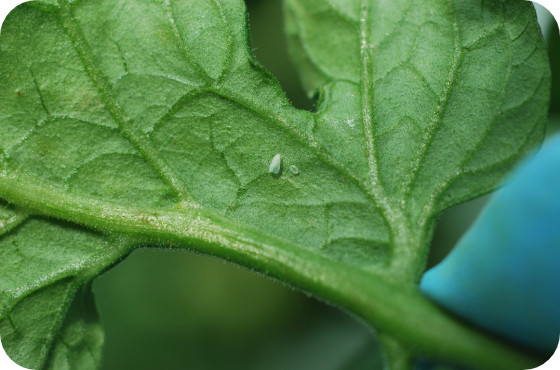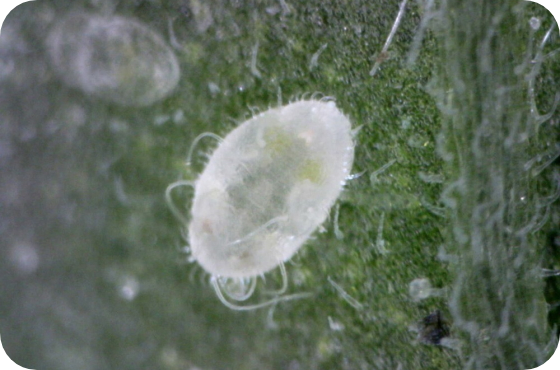Quality Products
Fast Delivery
Premium Service
Written by Jan-Paul de Wit | Last update: 12. May 2023
Although originally native to tropical and subtropical regions, whiteflies (Trialeurodes vaporariorum) have now become a global concern in both vegetable and ornamental crops, infesting a wide variety of plants like eggplant, cucumber, tomato, rose, and gerbera. These pests damage plants by sucking sap, which weakens the plant, leading to issues such as stunted growth, leaf yellowing, deformities, and even leaf drop. The larvae of whiteflies also produce wax and honeydew, which promotes sooty mould growth, further hindering the plant’s ability to photosynthesize. Additionally, whiteflies transmit viruses within greenhouses, resulting in even more damage and yield reduction.

Greenhouse whiteflies are often mistaken for tobacco whiteflies due to their similar appearance, but can be distinguished by their lighter colour, slightly larger size, and horizontally positioned wings that form a triangle. Whiteflies are 1 to 3 mm in size, have uniformly white wings and seven antennas.
Detecting whiteflies early is very important, especially at the start of the new crop cycle. Adult whiteflies are often found on the underside of leaves near the top of the plant, where they primarily lay their eggs. The eggs, initially white, darken after two days. You can catch infestations early by closely monitoring whiteflies using visual inspection and sticky traps. Tobacco whiteflies spread their eggs throughout the entire greenhouse, which makes taking timely action and introducing a greenhouse whitefly control approach for the entire crop essential.
The whitefly undergoes six distinct stages in its life cycle: starting as an egg, progressing through four larval stages, and finally emerging as an adult. The larvae are oval-shaped and are active during the first stage; however, by the second stage, they attach themselves to the leaf, drawing out essential nutrients. Once pupation is complete, the adult whitefly quickly begins feeding on plant sap.

Whitefly as pupa

Whitefly in the third larval stages

Whitefly adult
Greenhouse whitefly has the same damaging effects on plants as tobacco whitefly. Both pests pierce plant cells to feed on sap, leading to leaf deformation or even plant death. While the fly consumes proteins, it excretes excess sugars as honeydew, which fosters the growth of sooty molds. Moreover, greenhouse whitefly also helps spread viruses like the Tomato Chlorosis Virus (ToCV), making whitefly control in tomatoes very important.
Given the diverse range of plants that greenhouse whiteflies can infest, proactive prevention and swift action upon detection are crucial. Maintaining excellent company hygiene is essential in managing these pests. If you spot whiteflies in your crops, you can tackle them using organic whitefly control methods such as introducing parasitic wasps and predatory mites. Additionally, chemical crop protection agents can be employed for more immediate greenhouse whitefly control.
To manage greenhouse whiteflies effectively, consider using biological control methods by introducing their natural enemies into your crops. These beneficial insects include:
By incorporating these natural enemies into your pest management strategy, you can enhance organic whitefly control and reduce whitefly populations sustainably.
Whitefly can also be controlled with chemical pesticides. For more information, please contact our specialists.